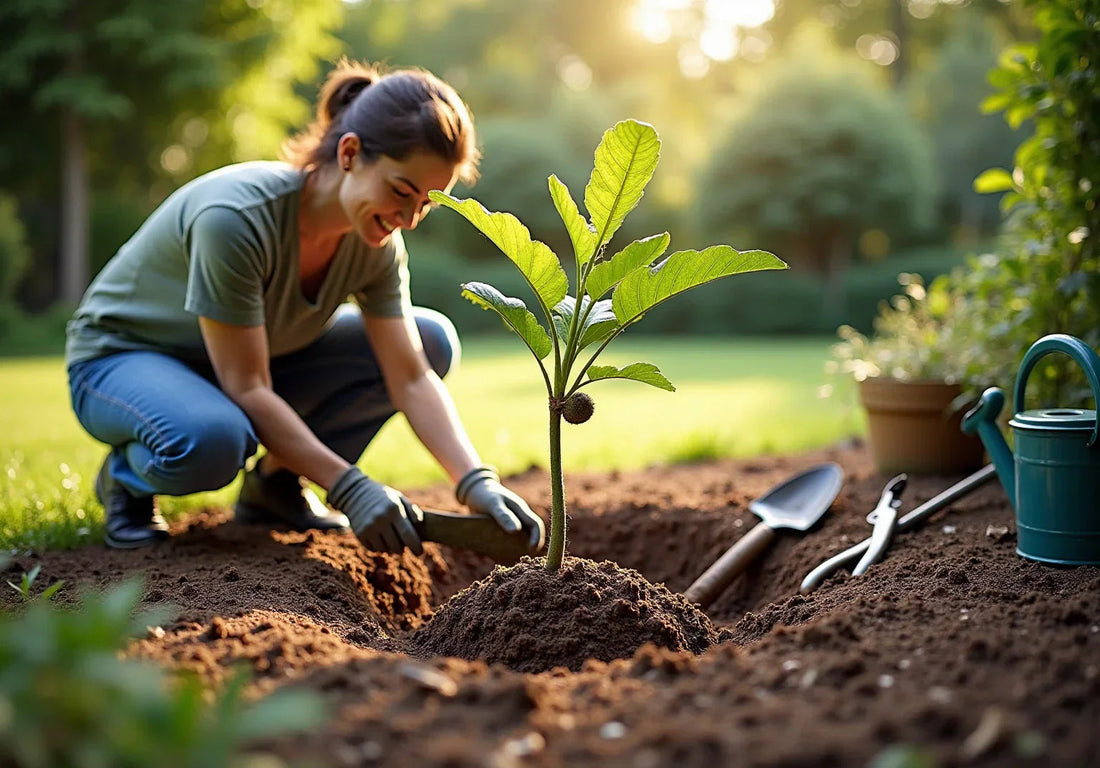
5 Steps to Grow Golden Nugget Jackfruit Successfully
Share
Cultivating a golden nugget jackfruit tree is a rewarding endeavor that offers both bountiful harvests and a unique addition to any garden. This guide outlines the essential steps and tools necessary for navigating the journey from planting to maintenance, ensuring that even novice gardeners can succeed. However, challenges such as nutrient deficiencies and pest infestations may arise.
Where to buy Golden Nugget Jackfruit?
Explore Golden Nugget Jackfruit Tree for sale at Everglades Farm - shipped directly from Florida.
1. Gather Essential Tools and Materials
To successfully grow a golden nugget jackfruit tree, it is essential to gather specific tools and materials that facilitate the planting process. These tools include:
- A shovel or spade, which is necessary for digging the planting hole.
- A garden trowel, useful for planting and transplanting the young tree.
- A soil testing kit, vital for checking the pH and nutrient levels of the soil, ensuring optimal growth conditions.
- Organic mulch, which plays a crucial role in retaining moisture and suppressing weeds, particularly important for young plants.
- A watering can or hose, advisable for regular watering, especially during dry spells.
- A balanced fertilizer, preferably organic and suitable for fruit plants, to provide the necessary nutrients for healthy growth.
- Pruning shears, important for maintaining the shape and health of the plant over time.
- Gloves, to safeguard your hands while working in the soil.
By preparing these tools in advance, you will simplify the planting process and ensure that you can provide the best care for your golden nugget jackfruit, leading to a successful growing experience.
2. Select an Optimal Planting Site and Prepare the Soil
To ensure the successful growth of your Golden Nugget Jackfruit tree, follow these essential steps for site selection and soil preparation:
-
Choose a Sunny Location: Golden nugget jackfruit plants thrive in full sun, needing at least 6-8 hours of direct sunlight each day. Select a location that is free from shade created by tall structures or nearby vegetation.
-
Check Soil Drainage: Proper drainage is critical to prevent root rot. If water tends to pool in your chosen area, consider planting on a slight mound or in a raised bed to enhance drainage. This is especially important in flood-prone areas, where planting on a mound can significantly improve survival rates.
-
Test Soil pH: Golden nugget jackfruit plants thrive best at a pH level between 6.0 and 7.5, which aligns with the ideal pH for tropical fruit varieties. Utilize a testing kit to evaluate the pH level and amend the soil as necessary to create an optimal growing environment.
-
Prepare the Soil: Dig a hole that is twice as wide and deep as the root ball. Combine the excavated earth with organic compost to boost fertility and drainage, ensuring a nutrient-rich base for your plant. Medium-textured soils, such as silt or loams, are particularly suitable for jackfruit plants.
-
Add Mulch: Incorporate a layer of organic mulch into the soil to improve moisture retention and suppress weed growth. However, ensure that the mulch is kept 8 to 12 inches away from the base of the plant to avoid potential issues.
By adhering to these steps, you will create an ideal environment for your golden nugget jackfruit to thrive, significantly enhancing the likelihood of a successful harvest.
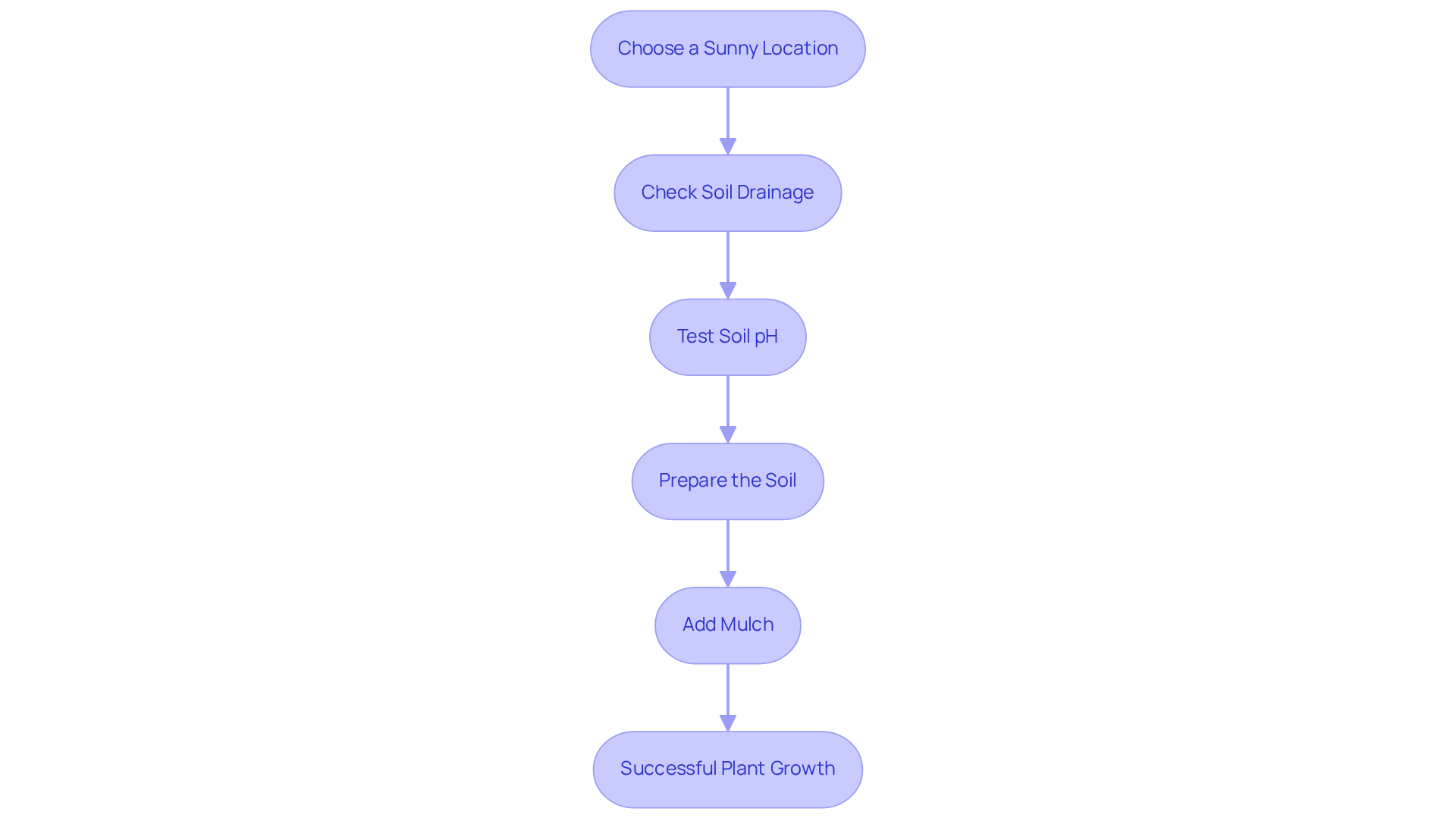
3. Plant the Golden Nugget Jackfruit Tree
To successfully plant your Golden Nugget Jackfruit tree, it is essential to follow these steps:
-
Dig the Planting Hole: Create a hole approximately 2 feet deep and 2 feet wide. This size provides adequate space for the plants to grow and settle. The suggested planting depth for tropical fruit plants is crucial for optimal growth, ensuring that the ball of soil is positioned accurately.
-
Place the Plant: Gently remove the plant from its pot, loosening any tightly bound fibers. Position the tree in the center of the hole, ensuring that the top of the ball is level with the surrounding earth to encourage healthy growth. As noted by M. A. Haque, proper root ball positioning is vital for maximizing growth and yield.
-
Backfill the Hole: Fill the hole with a prepared earth mixture, gently tamping it down to eliminate air pockets. Take care not to bury the trunk of the plant, as this can lead to rot.
-
Water Thoroughly: After planting, water the tree deeply to assist in settling the soil around the base. Ensure that the water reaches the plant's zone effectively, promoting robust root growth. Research indicates that thorough watering post-planting is essential for establishing a healthy root system.
-
Create a Water Basin: Form a small basin around the base of the plant to retain water during irrigation, ensuring consistent moisture levels for optimal growth. Wider spacing between plants can also enhance yields and fruit quality, as it reduces competition for resources.
By adhering to these steps, you will establish a solid foundation for your golden nugget jackfruit plant, which will pave the way for vigorous growth and productive yields.
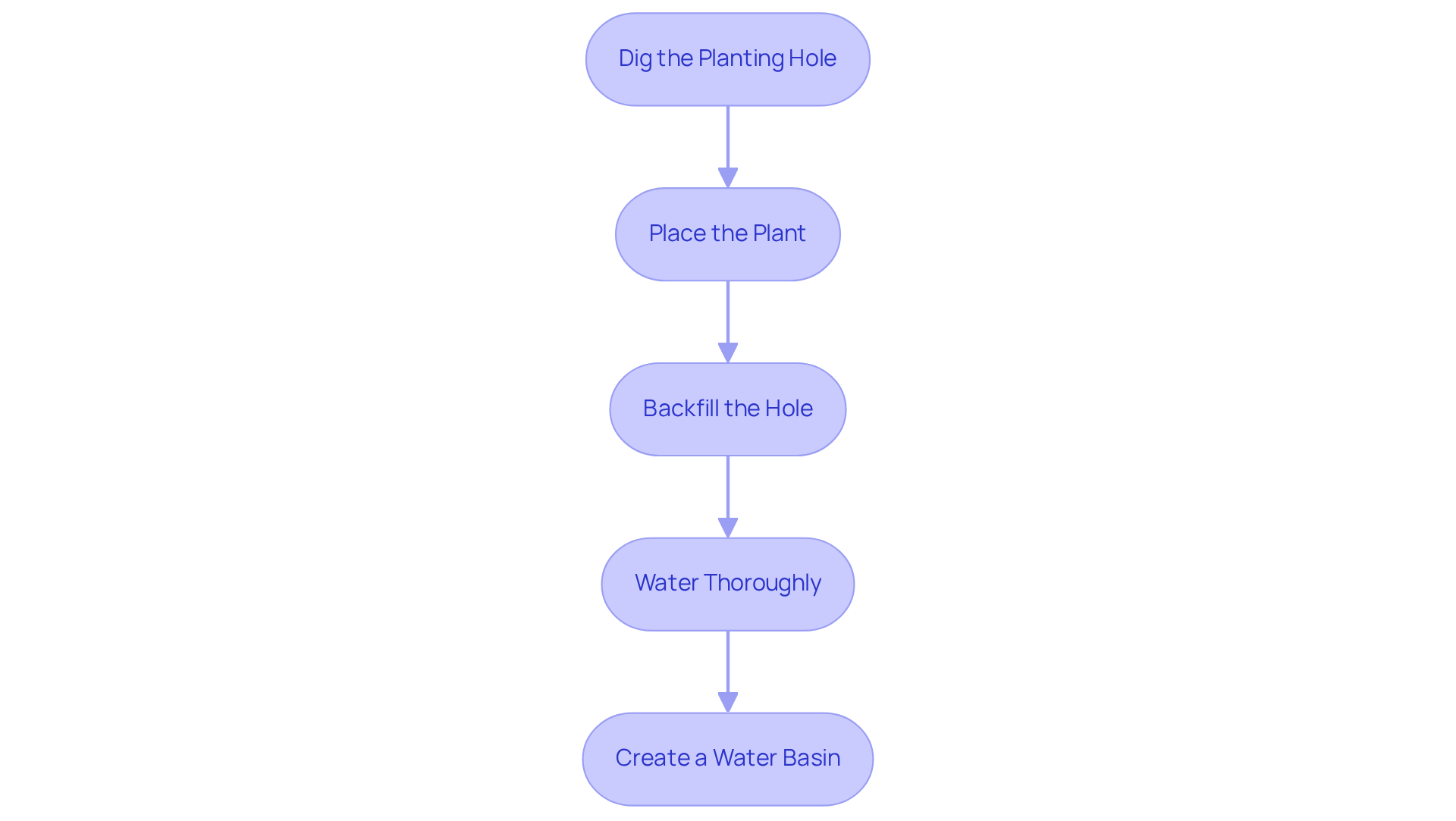
4. Maintain and Care for Your Jackfruit Tree
To effectively maintain and care for your Golden Nugget Jackfruit tree, it is essential to follow these guidelines:
-
Watering: Regular watering is crucial, particularly during dry spells. Young plants require approximately 5 gallons of water about three times weekly to develop robust roots. Once fully grown, these plants can be irrigated weekly, ensuring the ground remains consistently damp but not saturated. In drier regions, mature plants may need watering once a week or every two weeks, depending on conditions. Always water around the drip line and avoid overhead sprinklers to prevent diseases.
-
Fertilization: To promote vigorous growth and fruit production, apply a balanced fertilizer every 6-8 weeks throughout the growing season. Organic fertilizers, such as compost or well-rotted manure, are particularly beneficial, enhancing soil health and nutrient availability.
-
Pruning: Annual trimming is essential for maintaining the plant's shape and removing any dead or diseased branches. This practice not only promotes improved air circulation and light penetration but also enhances overall plant health.
-
Pest Management: Monitor for common pests like jackfruit borers and rhinoceros beetles. Employ organic pest control methods, such as neem oil, to effectively manage any infestations without harming beneficial insects.
-
Mulching: Apply a layer of organic mulch around the base of the plant. This helps maintain moisture in the ground, inhibits weed development, and enhances overall soil health, fostering an ideal environment for growing golden nugget jackfruit. Regularly check soil moisture levels to ensure your plant remains healthy.
By adhering to these care practices, you will ensure that your jackfruit plant flourishes and remains productive during its growing seasons.
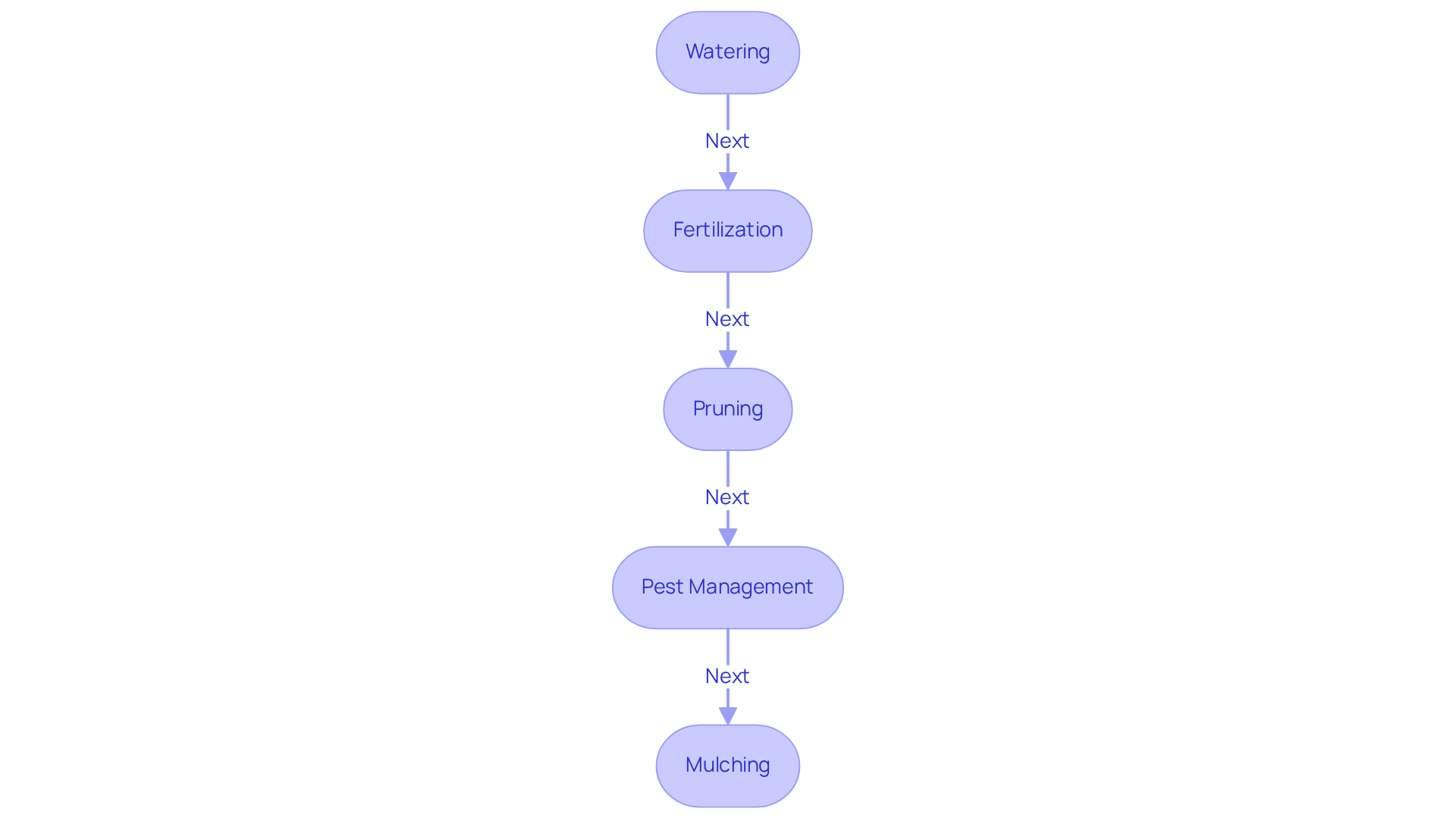
5. Troubleshoot Common Growing Challenges
Growing golden nugget jackfruit trees can present several challenges. However, understanding these issues and their solutions can significantly enhance your gardening success.
-
Yellowing Leaves: This condition often signals nutrient deficiencies, particularly nitrogen. Signs of nitrogen deficiency in Jackfruit plants include yellowing leaves. To remedy this, apply a balanced fertilizer with equal proportions of nitrogen, phosphorus, and potassium to restore nutrient levels. Maintaining ground pH between 6.0 to 6.5 is also essential for optimal nutrient absorption.
-
Dropping Fruit: Premature fruit drop may result from inconsistent watering practices. A significant percentage of home gardeners face this issue. Ensure that your plant receives consistent moisture by regularly checking soil moisture levels and adjusting your watering schedule to prevent both overwatering and underwatering.
-
Pest Infestations: Pests such as jackfruit borers can jeopardize the health of your plant. Conduct weekly inspections to catch infestations early, and utilize organic pest control methods to manage any outbreaks effectively.
-
Poor Fruit Development: Inadequate sunlight or nutrient deficiencies can hinder fruit growth. Ensure your jackfruit plant receives at least six hours of direct sunlight daily, and consider adjusting your fertilization routine to support healthy fruit development.
-
Root Rot: Excessive watering can lead to root rot, a significant problem for jackfruit plants. To prevent this, ensure your soil has good drainage and adjust your watering frequency, especially during cooler or wetter periods. Regularly examine your plant and modify your practices according to seasonal changes.
By proactively addressing these common challenges, you can ensure the health and productivity of your golden nugget jackfruit tree, leading to a fruitful harvest.
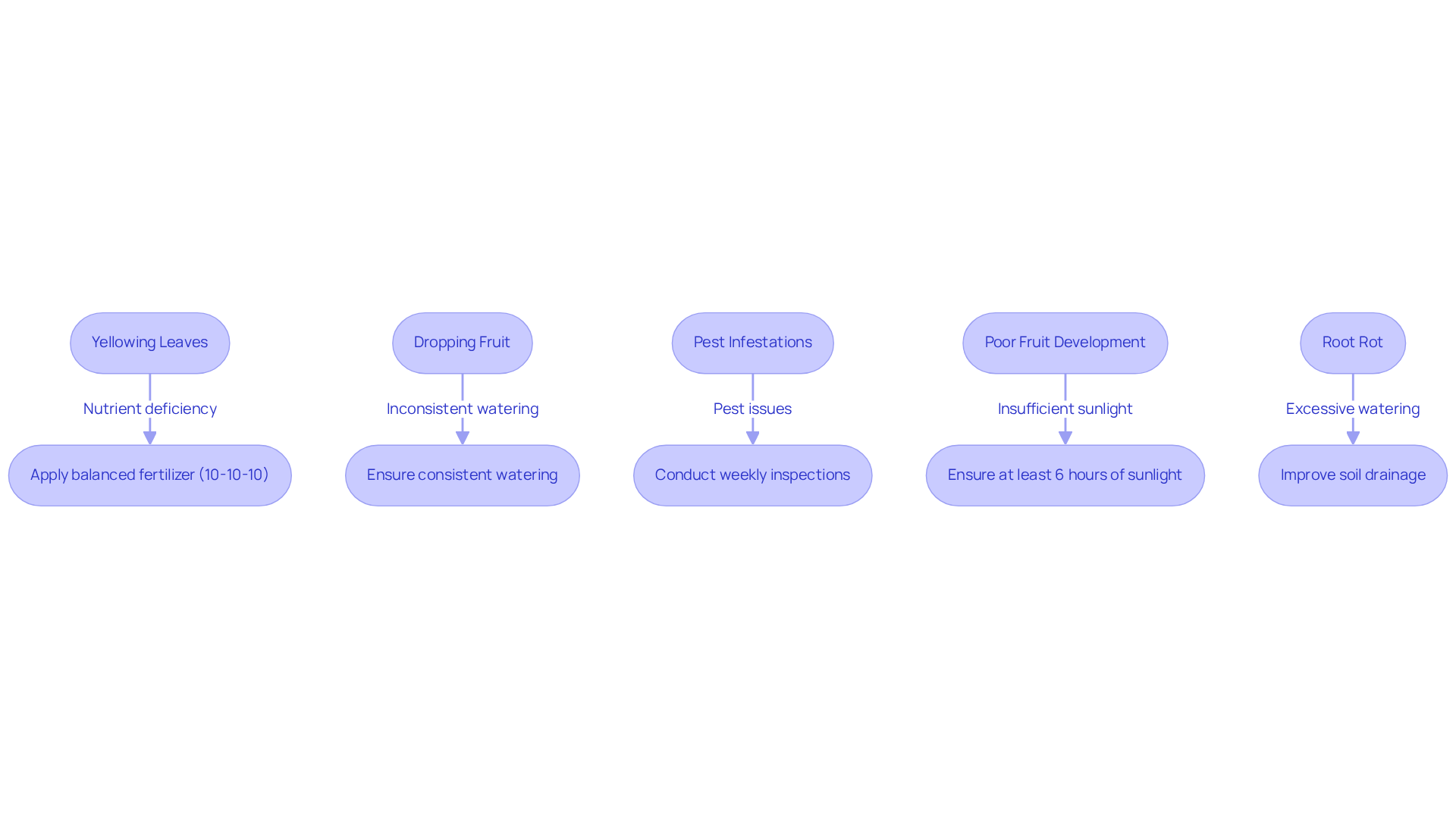
Conclusion
Successfully cultivating a golden nugget jackfruit tree requires careful planning and execution, encompassing everything from selecting the right tools to addressing common growing challenges. The journey begins with gathering essential materials, choosing an optimal planting site, and preparing the soil to create a nurturing environment. Each step in this process, from planting techniques to ongoing care, is pivotal in ensuring that the tree thrives and produces abundant fruit.
Key insights highlighted in this guide include:
- The importance of proper soil preparation
- Consistent watering practices
- Regular maintenance through fertilization and pruning
By understanding the specific needs of the golden nugget jackfruit, including sunlight requirements and pest management, gardeners can significantly enhance their chances of a fruitful harvest. Moreover, troubleshooting common issues such as yellowing leaves or root rot is crucial for maintaining plant health and productivity.
Ultimately, growing a golden nugget jackfruit tree is a rewarding endeavor that not only provides delicious fruit but also enriches the gardening experience. Embracing these cultivation techniques and staying proactive in addressing challenges will lead to a thriving jackfruit tree. Whether for personal enjoyment or to share with others, the journey of nurturing this unique fruit tree is one filled with potential and satisfaction.
Grow Your Own Golden Nugget Jackfruit Today!
Start your gardening adventure with Everglades Farm and enjoy fresh, tropical fruits right from your backyard.
🛒 Buy Golden Nugget Jackfruit
👉🏻 Explore Fruit Trees Collection
👉🏻 Explore Dwarf Trees Collection
Frequently Asked Questions
What tools are essential for planting a golden nugget jackfruit tree?
Essential tools include a shovel or spade, garden trowel, soil testing kit, organic mulch, watering can or hose, balanced fertilizer (preferably organic), pruning shears, and gloves.
Why is it important to gather tools in advance for planting?
Preparing tools in advance simplifies the planting process and ensures that you can provide the best care for your golden nugget jackfruit, leading to a successful growing experience.
What is the ideal location for planting a golden nugget jackfruit tree?
The ideal location is a sunny area that receives at least 6-8 hours of direct sunlight each day, free from shade created by tall structures or nearby vegetation.
How can I ensure proper soil drainage for my jackfruit tree?
To ensure proper drainage, avoid areas where water tends to pool. Consider planting on a slight mound or in a raised bed, especially in flood-prone areas, to enhance drainage.
What is the optimal soil pH for growing a golden nugget jackfruit tree?
The optimal soil pH for golden nugget jackfruit plants is between 6.0 and 7.5.
How should I prepare the soil for planting a golden nugget jackfruit tree?
Dig a hole that is twice as wide and deep as the root ball, combine the excavated earth with organic compost, and ensure a nutrient-rich base. Medium-textured soils like silt or loams are particularly suitable.
Why is mulch important when planting a jackfruit tree?
Organic mulch helps improve moisture retention and suppress weed growth, which is particularly important for young plants. However, keep the mulch 8 to 12 inches away from the base of the plant to avoid potential issues.


